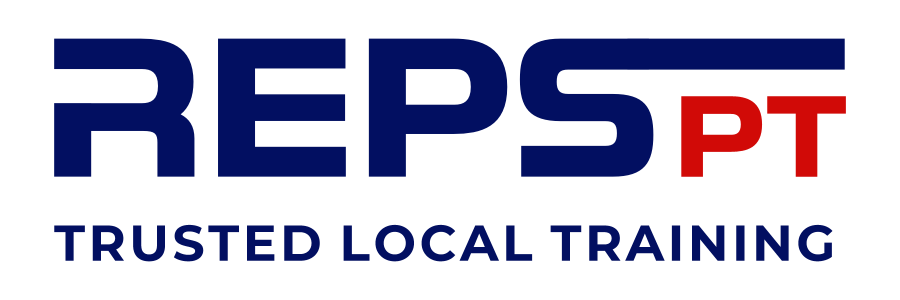The Dumbbell Seated Overhead Tricep Extension is a highly effective exercise for targeting the triceps, the muscles at the back of the upper arm. This movement isolates the triceps, particularly the long head of the muscle, and helps build both strength and definition in the arms. It can be performed using a single dumbbell and is often incorporated into arm and upper-body training routines. Here’s an overview of the benefits and proper form for the Dumbbell Seated Overhead Tricep Extension.
Benefits of the Dumbbell Seated Overhead Tricep Extension
-
Targeted Tricep Development: The primary benefit of the Dumbbell Seated Overhead Tricep Extension is its ability to effectively isolate the triceps, especially the long head. The overhead position places more emphasis on this part of the muscle, leading to better overall development and definition of the triceps.
-
Improved Muscle Endurance and Strength: This exercise helps increase the strength and endurance of the triceps, which is beneficial for both aesthetic goals and performance in other pushing movements, such as the bench press, shoulder press, and push-ups.
-
Enhanced Arm Definition: Regularly incorporating tricep isolation exercises like the Dumbbell Seated Overhead Tricep Extension into your workout routine will help sculpt the arms. A well-developed tricep is essential for creating a balanced and defined appearance in the upper arm.
-
Reduced Shoulder Strain: By performing this movement seated, you reduce the chances of compensating with your legs or back, making it easier to focus on the triceps. This seated position also allows for more control over the weight, decreasing the risk of shoulder strain compared to standing variations.
-
Improved Elbow and Shoulder Joint Health: Strengthening the triceps can contribute to better elbow stability, especially for people who perform a lot of pressing movements. The exercise also promotes shoulder mobility, as the overhead position encourages flexibility and mobility in the shoulder joint.
-
Variation for Balanced Arm Development: Since the Dumbbell Seated Overhead Tricep Extension is an isolated tricep exercise, it can complement other arm exercises like the bicep curl, ensuring balanced development of both the front and back of the arm.
Form of the Dumbbell Seated Overhead Tricep Extension
To perform the Dumbbell Seated Overhead Tricep Extension with proper form, follow these steps:
-
Starting Position:
- Sit on a bench with a backrest, keeping your feet flat on the floor and your back pressed against the bench for support.
- Hold a single dumbbell with both hands, cupping the inner part of the dumbbell’s plate with your palms and fingers, so that your palms are facing upwards (as if you’re forming a "diamond" grip).
- Lift the dumbbell overhead with your arms fully extended, keeping your elbows close to your ears. Your arms should be perpendicular to the floor, and your elbows should be pointing directly upwards, not outwards.
-
Lower the Dumbbell:
- Begin the movement by slowly bending your elbows to lower the dumbbell behind your head. Keep your upper arms stationary and close to your ears throughout the movement. The only part of your arms that should move is your forearms.
- Lower the dumbbell until your elbows form about a 90-degree angle or until you feel a stretch in your triceps and shoulders.
-
Extend Back to the Start:
- Press the dumbbell back up to the starting position by straightening your arms. Make sure to engage your triceps as you extend your arms overhead.
- Fully extend your arms at the top, ensuring that your elbows don’t lock out completely but are fully extended.
-
Repeat:
- Perform the desired number of repetitions, keeping the movement controlled and focusing on engaging the triceps throughout the entire range of motion.
Tips for Success:
- Control the Weight: Avoid using momentum to lift the dumbbell. Control both the lowering and lifting phases to maximise muscle activation and minimise the risk of injury.
- Keep Elbows Stationary: Your elbows should remain as still as possible, pointing towards the ceiling. Avoid flaring your elbows out to the sides, as this can reduce the effectiveness of the exercise and place unnecessary stress on the shoulder joints.
- Engage Your Core: Keep your core tight to maintain stability throughout the exercise. This will help protect your lower back and prevent any excessive arching.
- Focus on the Stretch: Ensure you are getting a good stretch in your triceps when you lower the dumbbell behind your head. This helps activate the muscle more effectively.
- Don’t Overload the Weight: Start with a moderate weight to avoid straining your shoulders or elbows. Over time, you can gradually increase the load as your strength improves.
Variations:
- Single-Arm Dumbbell Overhead Tricep Extension: For a more unilateral approach, perform the exercise with one arm at a time. This can help identify and correct any strength imbalances between your arms.
- Dumbbell Overhead Tricep Extension with a Cable: If you have access to a cable machine, you can perform a similar movement with a rope attachment, which provides continuous tension on the triceps throughout the exercise.
Incorporating the Dumbbell Seated Overhead Tricep Extension into your arm routine can effectively isolate the triceps, leading to improved muscle development, strength, and definition. By following proper form and focusing on control, this exercise can help you build balanced and strong arms while reducing the risk of shoulder and elbow strain.

